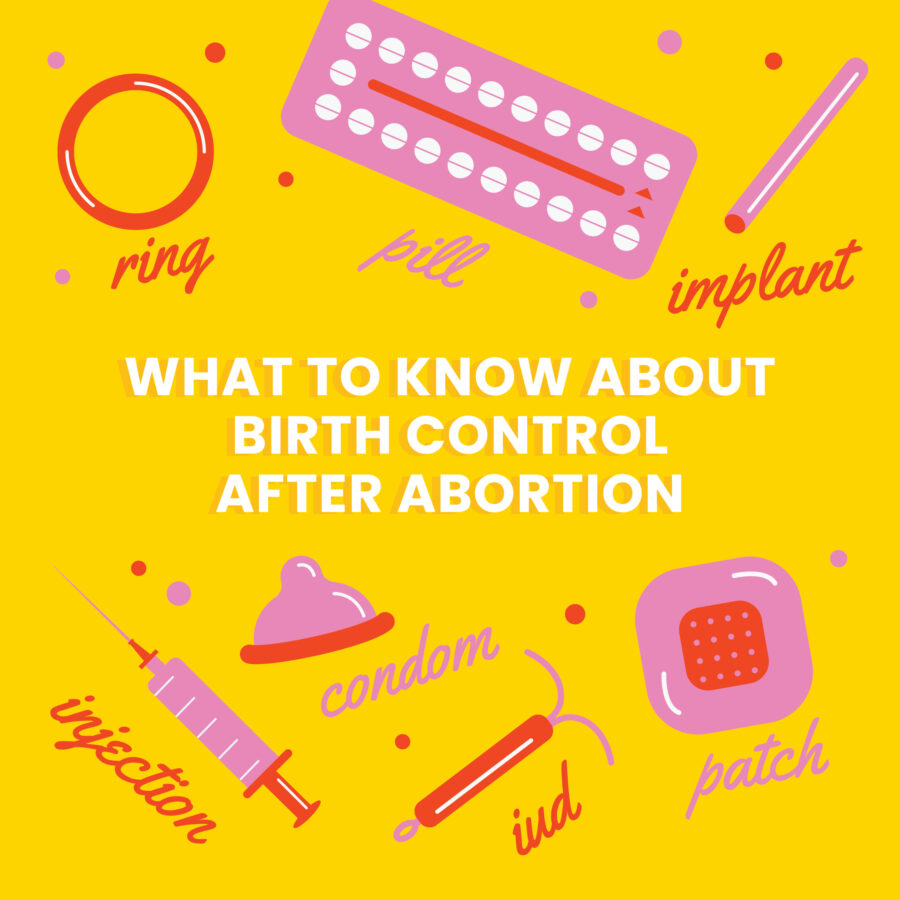Let’s talk about birth control
When it comes to birth control, there are lots of different options to choose from. Choosing the right one for you is a personal decision. Everyone is different, so what’s important to you might be different from what’s important to someone else. Some things to keep in mind when you’re thinking about birth control options are:
- Do you want a method that you use each time you have sex or one that you use on a specific schedule?
- Is how well the method works to prevent pregnancy very important to you?
- Do you want a birth control method that also helps protect you from sexually transmitted infections (STIs)?
- Do you want a method that you manage yourself or that needs to be placed by a healthcare professional?
- Do you prefer a method that uses hormones or that doesn’t use hormones?
- Do you want a method that is reversible or permanent?
Here’s a breakdown of some common types of birth control. If you’ve got questions, talking to your doctor or nurse can help. Your healthcare provider at Sunny can also talk to you about different options. You can also check out this resource on different types of birth control.
Combination Hormonal Birth Control
Combination hormonal birth control methods use forms of the hormones estrogen and progestin to prevent pregnancy. Combination birth control comes in pills, patches, and rings. You’ll need to remember to use these methods on a schedule. Some hormonal methods can also be used to manage other health conditions, like acne or heavy periods. Speaking of periods, some of these types of birth control can be used to skip your period! If you’re interested in this option, talk to your doctor or nurse for more information.
One great thing about combination hormonal birth control is that it works really well to prevent pregnancy. With typical use it’s 91 percent effective. But heads up — it doesn’t protect against STIs. Using condoms every time you have sex can help protect against STIs. For people with certain health conditions or on certain medicines, combination methods might not be recommended. Talk to your doctor or nurse to learn more.
Progestin-only pills
Progestin only pills, sometimes called the ‘mini-pill,’ are birth control pills that only use the hormone progestin. Just like combination pills, you take one pill daily. This might be a good option for someone that wants to take a pill daily, but wants to avoid estrogen for health reasons or side effects. With typical use it’s about 91 percent effective at preventing pregnancy. Heads up — like all types of the birth control pill, it doesn’t protect against STIs.
Recently the FDA approved Opill, a progestin-only pill that will be the first-ever over-the-counter birth control pill in the US! In a time where it has been getting harder for people to get sexual and reproductive healthcare, this is a huge win that will help make it easier for people to get birth control. Studies show that people can safely determine if birth control pills are right for them. This is a major step forward towards a future where everyone can make their own informed decisions about their sexuality and reproductive health.
Long-Acting Reversible Birth Control
The long-acting reversible types of birth control are just like they sound — they last a long time, but can be taken out any time. The two main types are Intrauterine Devices (IUDs) and implants. An IUD is a small T-shaped device that is put in your uterus by your doctor or other healthcare professional. They come in two different kinds — hormonal or non-hormonal. The hormonal IUDs have some progestin. The non-hormonal kind doesn’t have hormones. Depending on the kind you get, IUDs can last anywhere between 3-12 years. But you don’t need to keep them that whole time. You can have them removed anytime you want.
The implant is a tiny rod that is placed in the upper arm by a healthcare professional. It contains and releases progestin. This prevents ovulation and thickens the cervical mucus to prevent pregnancy. An implant can last up to 5 years, but you can get it taken out anytime you want.
IUDs and implants are both super effective forms of birth control. They are both more than 99 percent effective at preventing pregnancy! They’re also super convenient, since once you get them you don’t have to think about them every day. But they don’t protect against STIs. Remember, using condoms every time you have sex can help protect against STIs.
Injectable birth control
Injectable birth control or the birth control shot, is a shot you get every 3 months to prevent pregnancy. The shot contains progestin which prevents ovulation and thickens the cervical mucus. You can get the shots from a doctor or nurse or learn to do the shots at home. It’s important to get the shots on time. The shots are 96 percent effective at preventing pregnancy. They don’t help protect against STIs.
Barrier Methods
Barrier methods of birth control create a physical barrier so that sperm and the egg have a harder time meeting. These methods include condoms, including internal condoms, sponges, diaphragms, and cervical caps. Condoms and sponges can be bought at a store or online without a prescription. For cervical caps and diaphragms, you’ll need a prescription. Cervical caps and diaphragms are used with spermicide. Spermicides contain a medicine to inactivate sperm, and come in a variety of creams, gels, foams, or inserts. The sponge comes with spermicide in it.
To work best, barrier methods require correct use every time you have sex. With typical use these methods range from about 79-85 percent effective to prevent pregnancy.
As a bonus, condoms and internal condoms can also help protect against sexually transmitted infections (STIs).
Fertility Awareness-Based Methods
Fertility awareness-based methods that involve tracking your menstrual cycle. This can help you figure out when you’re most likely to get pregnant, so you can avoid sex during that time. These methods include tracking your body temperature, your cervical mucus, and/or tracking your cycles regularly on a calendar.
Fertility awareness-based methods take effort and consistency to work. Typically, they range from 77 to 98 percent effective at preventing pregnancy. How well they work depends on which methods are used and how consistently they are used. These methods won’t protect against STIs, so using condoms to prevent STIs is important.
Permanent Birth Control
Permanent methods of birth control are sometimes called sterilization. The main types of sterilization are tubal ligation and vasectomy. Tubal ligation is a procedure to block the fallopian tubes in someone with a uterus. This prevents the sperm and egg from meeting. You might have heard this called ‘getting your tubes tied.’ A vasectomy is a procedure for someone with testicles and a penis. In this procedure, the vas deferens, long tubes that carry sperm and fluid to the penis, are cut and closed. This blocks sperm from getting into the semen (the fluid that comes out of the penis).
Both tubal ligation and vasectomy are more than 99 percent effective at preventing pregnancy. These are both medical procedures, so they’ll take some planning and you’ll need to see a doctor. But once you have them done, there’s nothing else for you to do. Permanent methods of birth control are for people who are sure they don’t want to have children in the future. But these methods don’t protect against STIs, so keep that in mind too.
Bottom line
No matter which birth control method you choose, using that method consistently and correctly will best help you prevent pregnancy. Keep in mind that of all the types of birth control, only condoms and internal condoms help protect against STIs. Using condoms every time you have sex can help protect against STIs.
There’s no one-size-fits-all when it comes to birth control. Finding the right method for you can take time and some trial and error. Don’t be afraid to talk to your healthcare provider and ask questions to help you figure out which method is right for you. And if you try a method and feel like it’s not quite right for you, don’t worry! You’ve got many more options to choose from.



